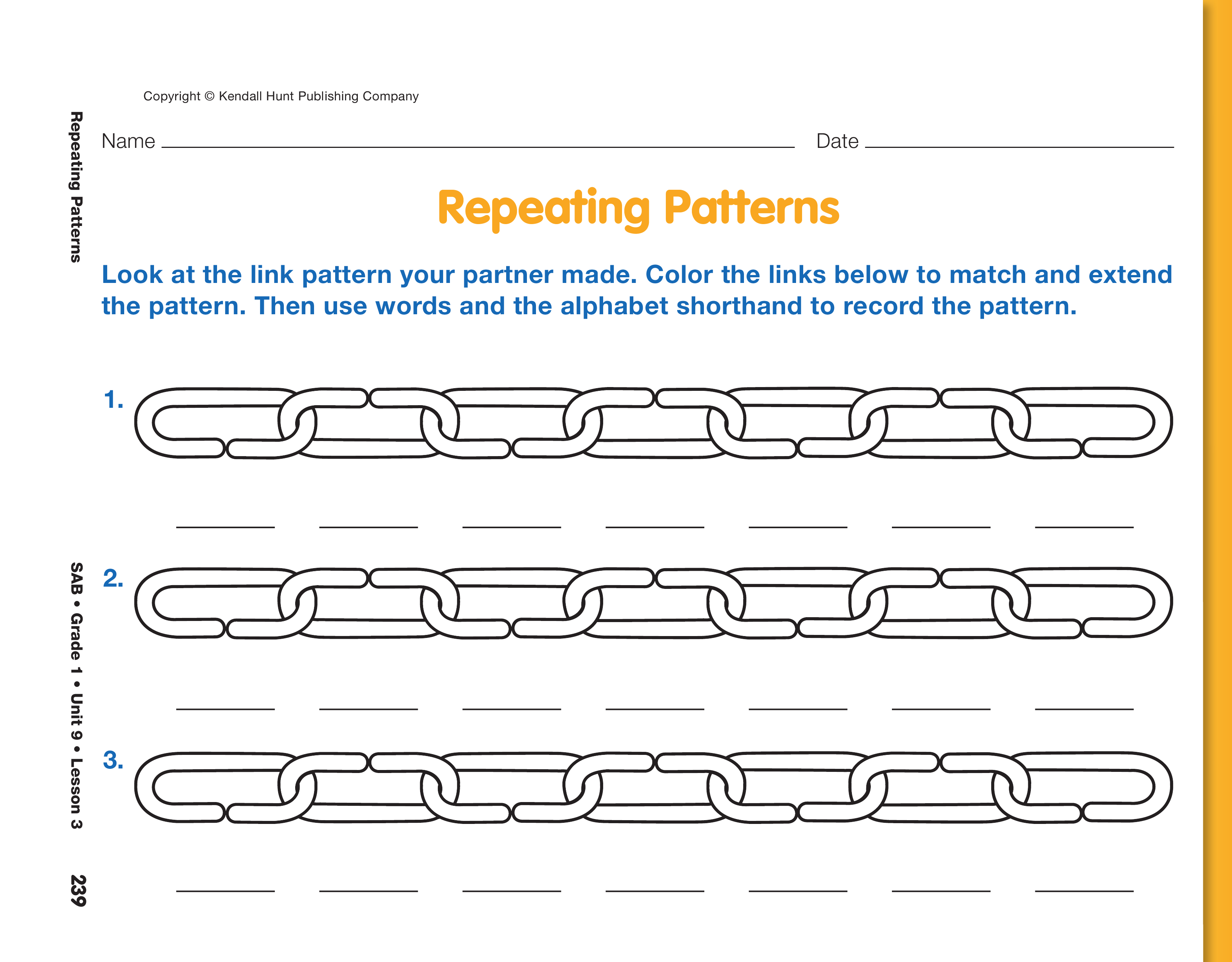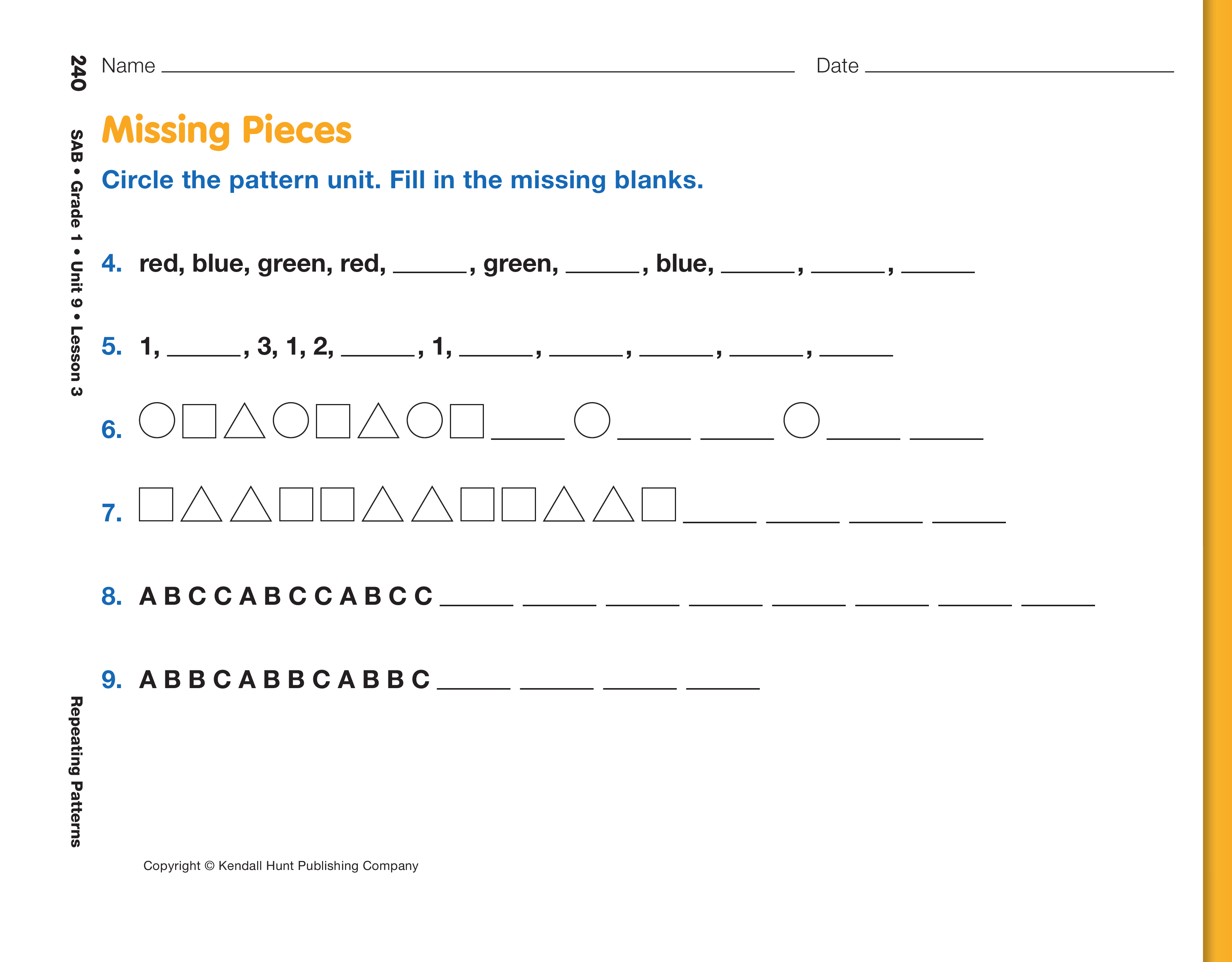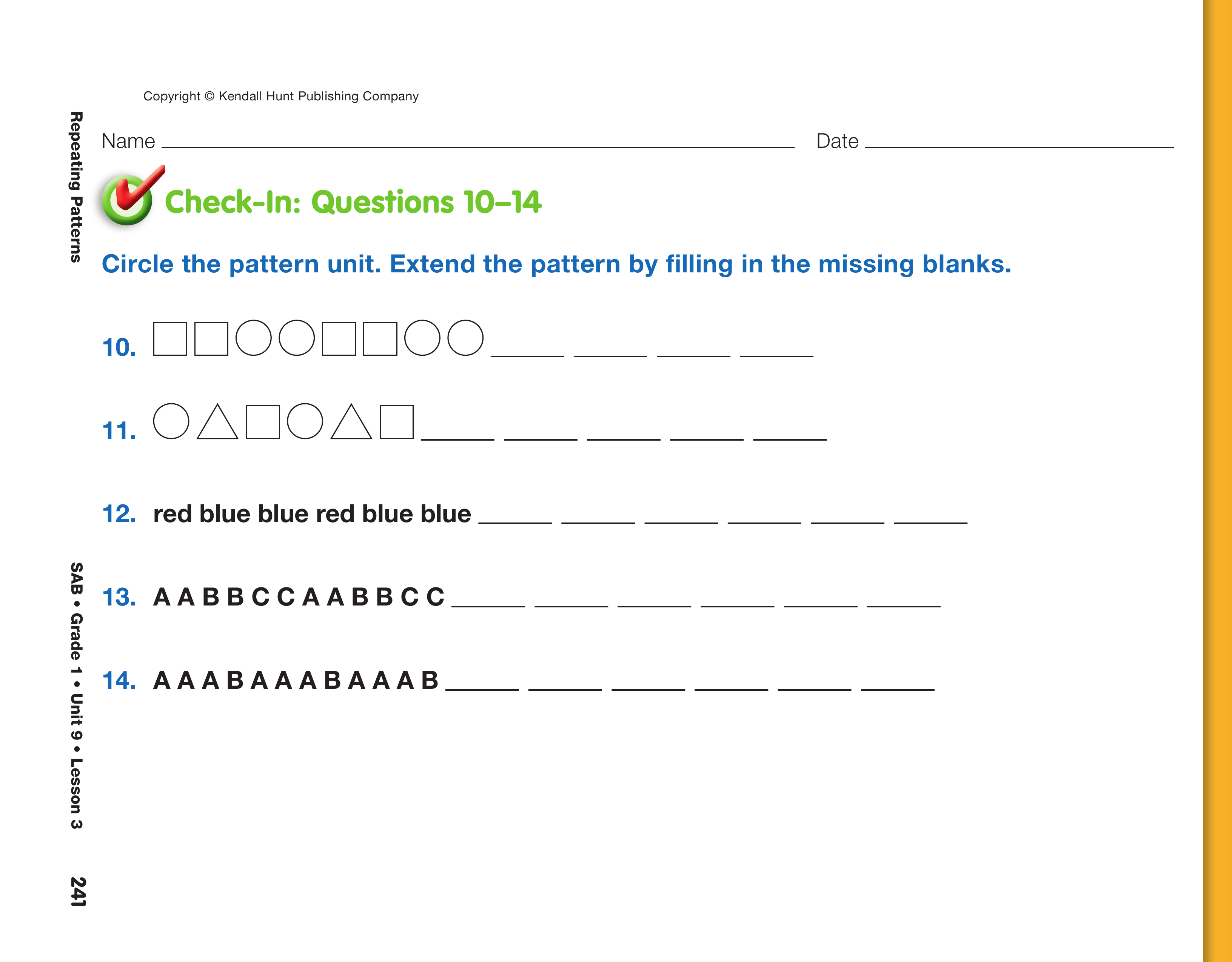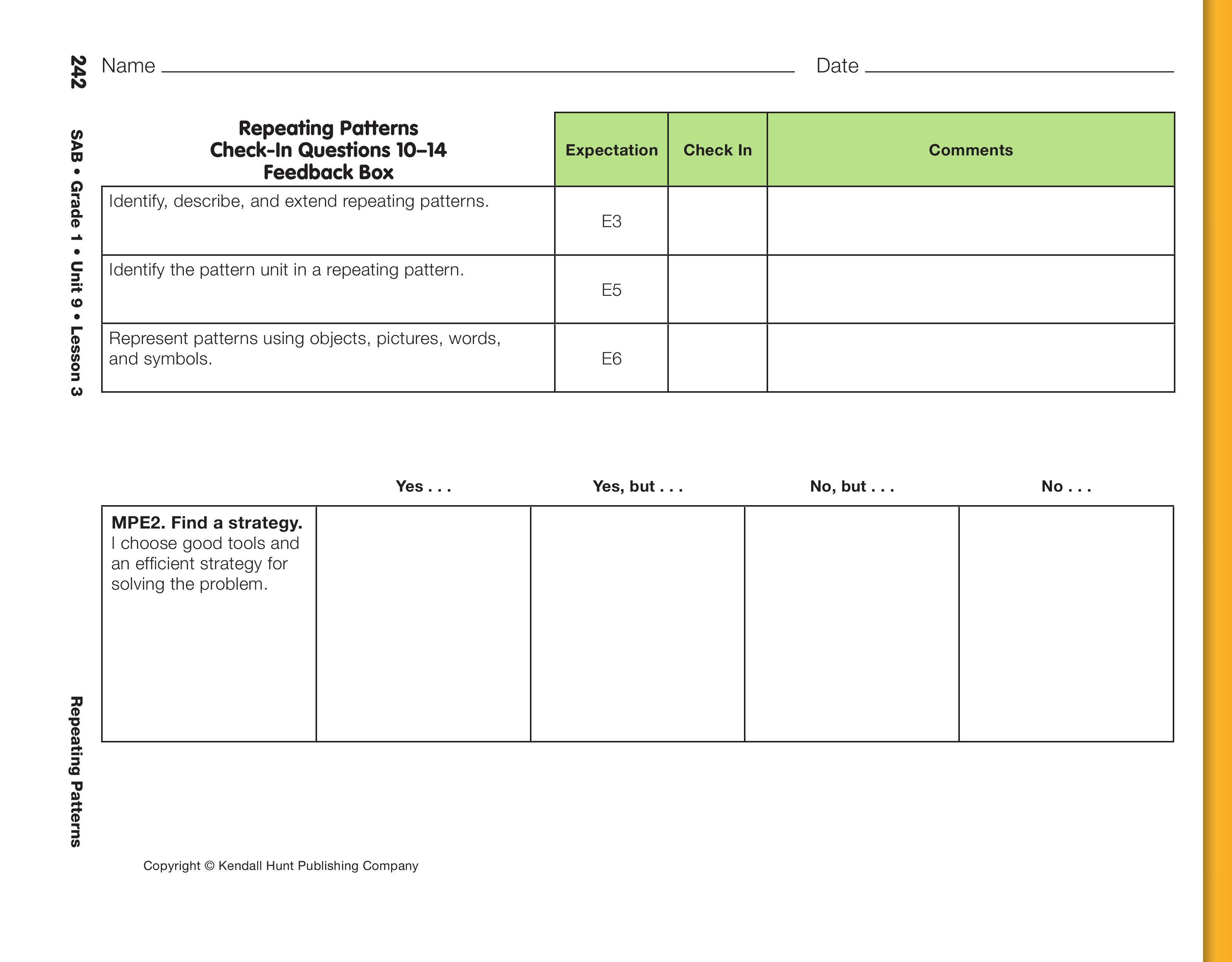Repeating Pattern
Est. Class Sessions: 1–2Developing the Lesson
Part 2: Repeating Patterns with Links
Identify and Extend Link Patterns. Introduce link patterns by showing the class the bag containing the six-link chains with a color pattern of red, green, blue. See Materials Preparation. By revealing one link at a time, ask students to describe the pattern in the chain.
Show only one link of the chain.
Ask:
Show the first two links of the chain.
Ask:
Show the first three links of the chain.
Ask:
When the sixth link is revealed, students should say that the repeating pattern is red, green, blue, red, green, blue or the pattern unit is red, green, blue. Expose the entire chain and ask students to extend the pattern by asking what link comes next. Follow the same procedure with other link chains.
Organize students into groups or pairs and distribute a bag and links to each group. Ask students to take turns repeating the whole-class activity for each other. They build a pattern with a chain of links, place the chain in the bag, and pull the chain out of the bag one link at a time. The other students identify the pattern unit, predict what the next link will be, and add links to extend the pattern.
Record Link Patterns. Once students have identified and extended patterns, they should be ready to record patterns. Make a simple color pattern with six links, such as red, blue, red, blue. Ask students to identify the pattern and tell how to extend it. Use the display of Questions 1–3 on the Repeating Patterns page to demonstrate how to record the pattern. Color the links to match the pattern and translate this pattern into words by writing the color of each link. Write "red," "blue," "red," "blue" under the appropriate links on the page.
Explain to students that recording the colors of the links to identify the pattern can be time-consuming. Introduce the alphabet shorthand method by using A for the first element in the repeating unit, B for the second, C for the third, and so on. Using this alphabet shorthand, the alternating red link, blue link pattern is ABABABAB. Write these letters below the appropriate links pictured on the display of the Repeating Patterns page. See Figure 2 for examples of recording patterns with words and the alphabet shorthand.
Use the multiple copies of Questions 1–3 of the Repeating Patterns pages to practice recording other patterns by coloring the links, using the words at the start of the pattern, and then changing to alphabet shorthand after the pattern has been established with words (e.g., red, red, blue, red, red, blue, A, A, B, A, A, B). After recording several patterns with both words and the alphabet shorthand, demonstrate patterns with only the alphabet shorthand.
Distribute links to each group and ask students to make, identify, extend, and record patterns in Questions 1–3 on the Repeating Patterns page in the Student Activity Book. Encourage students to make three different patterns.
Find the Missing Pattern Pieces. For additional practice in identifying and extending patterns, use the display of Questions 4–9 on the Repeating Patterns page in the Student Activity Book. Introduce Questions 4 that has some elements missing and ask students to identify and fill in the missing pattern pieces for the pattern unit red, blue, green.
Ask:
Have students continue to identify the pattern unit and extend the patterns for the remaining questions on the page
After students have completed Questions 4–9, use the display of Check-In: Questions 10–14 on the Repeating Patterns page to explain the directions for the assessment. Students should work on these questions independently.


















